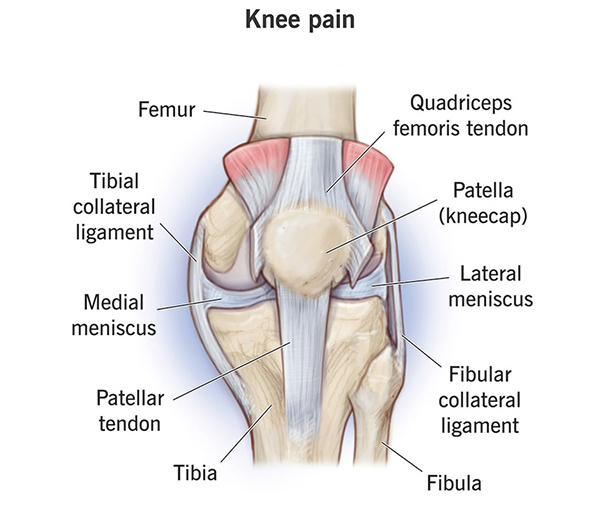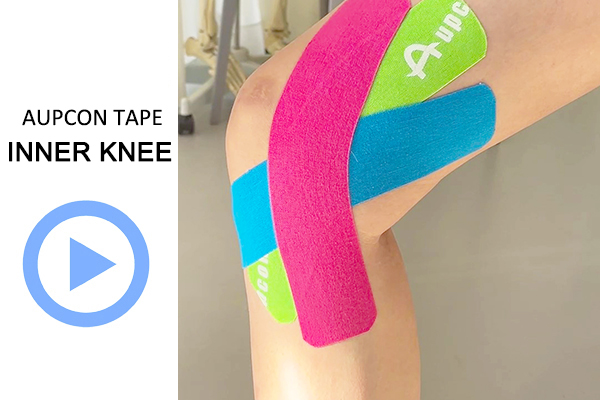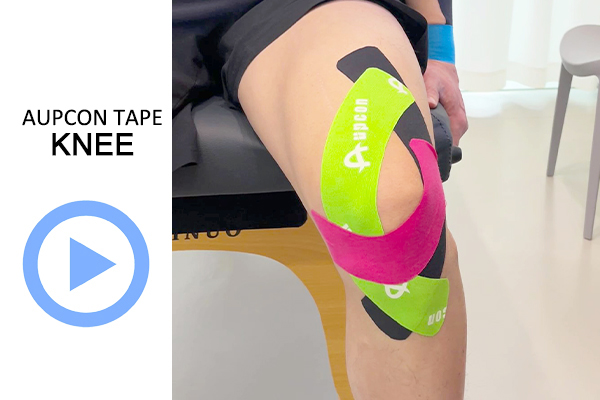How to use knee kinesiology tape
Knee Pain
Nowadays, more and more people like to run for exercise, but they may ignore protecting their knees. Long-term overuse may cause ligament damage, meniscal tears, patellofemoral pain, ACL injury, LCL injury, a runner’s knee, medial collateral ligament damage, etc. Wrapping the knee with knee kinesiology tape can help stabilize the knee and reduce pain during activity; this helps protect your knees and prevent disease. Come and learn with us. Please read this article for detailed methods.
kinesiology tape Taping tips
- Apply a knee kinesiology tape one hour before running.
- After applying, rub the knee kinesiology tape several times to make it fit the skin.
- Do not use tape on open wounds or sensitive skin.
- Please keep your skin clean before applying.
- Properly trim the hair in the area where the tape is to be used for a better fit.
- Trim the corners to avoid lifting the tape due to excessive contact.
How to use knee kinesiology tape for KNEE PAIN
Knees bent 90 degrees.Use knee tape to secure the anchor point just above your kneecap.
The stretch on the right side of the Y-shaped tape is 30%.
Fit the tape along the right patella and secure the end below the kneecap.
The stretch on the left side of the Y-shaped tape is also 30%.
The Y-tape warp around the kneecap is finished.
Create a new anchor point at the intersection where the Y-shaped tape wraps the patella.
Stretch the tape up the thigh by 50%.
The end of the I-shaped tape is fixed to the right side of the Y-shaped tape.
Make the final anchor point just below the right side of the kneecap.
Likewise, stretch the I-tape up the thigh by 50%.
Apply it to the left side of the Y-tape and rub the tape to finish.
What is a knee kinesiology tape?
The main function of knee kinesiology tape
1. Provide patella support
2. Relieve pressure and pain caused by overuse
3. Reduce inflammation and swelling of injured knees
4. Reduce fluid accumulation and promote blood circulation
Application of knee Kinesiology Tape
Knee kinesiology tape is widely used in running, cycling, football, soccer, basketball, etc.
Precautions for knee kinesiology tape
If skin irritation or redness occurs, please stop using!
Cotton kinesiology tape
for knee pain
→
Frequently Asked Questions
There are many causes of knee pain, including injuries (strains, sprains, torn ligaments, and cartilage tears) and conditions such as osteoarthritis, tendonitis, and bursitis(Inflammation of the tiny, fluid-filled sacs of tissue (bursae).
Knee injuries are the most common among athletes. They are often accompanied by pain because their knees bend multiple times, especially during sports such as running, playing basketball, soccer, jumping, or biking. It presents as pain around the kneecap and can be caused by overuse, injury, leg bone or foot abnormalities, and muscle weakness.
Pain: Various pains can occur in or around the knee joint.
Swelling: Swelling around the joint may occur due to inflammation, injury, or arthritis.
Stiffness: Sitting for long periods at work may cause joint stiffness, affecting the ability to move.
Limited range of motion: Knee pain can limit the normal range of motion of the joint.
Redness and warmth: Inflammation of the knee joint can cause redness and warmth around the affected area.
Rest: Pause regular activities to reduce repeated knee joint movements and avoid further injury.
Ice compress: can reduce pain and inflammation but should not be used for more than 20 minutes to avoid damage to nerves and skin.
Hot compress: Applying heat to the painful area of the knee joint can help you temporarily relieve pain.
Knee kinesiology tape: Use knee tape to prevent fluid accumulation in damaged tissue and maintain knee alignment and stability.
Knee kinesiology tape mainly tapes the kneecap in various ways to support the knee and relieve pain and inflammation caused by sports strain, helping you reduce knee effusion and promote recovery.
Easy to operate. Just click on cotton kinesiology tape, synthetic kinesiology tape, nylon kinesiology tape, pre-cut kinesiology tape, punched kinesiology tape, kinesiology tape strips, etc., to jump to our product page to purchase. If you are skeptical about the AUPCON Tape brand, go to our kinesiology tape manufacturers page, which has more detailed information about our factory and services.
We look forward to your choice.
Other Body Parts
Proper use of knee kinesiology tape can relieve knee pain. But there’s more than one way to treat knee pain. This article shows only one of them. Stay tuned to our website if you want to learn more about knee pain treatment.
The causes of medial knee pain are often due to medial collateral ligament tear or sprain, meniscus tear, joint inflammation and other problems. Tape for inner knee pain can effectively treat and prevent further pain, help support the thigh to the inside of the knee, relieve pressure and speed up recovery.
A runner’s knee usually occurs when running. The knee joint has to bear the body’s weight and the impact from the ground simultaneously. Chronic overuse injuries cause most knee injuries. Achilles tendon tightness, unstable foot support, flat feet, etc., are all causes. Using kinesiology tape for runners knee can help support damaged knees and relieve pain.
Shin splint pain, or medial tibial stress syndrome, occurs when the tendons and muscles around the shin become inflamed after excessive exercise, and high-impact activities can cause muscle swelling. Just three easy kinesiology tape for shin splints steps can help you resolve this symptom, speed up recovery, and relieve pain.





